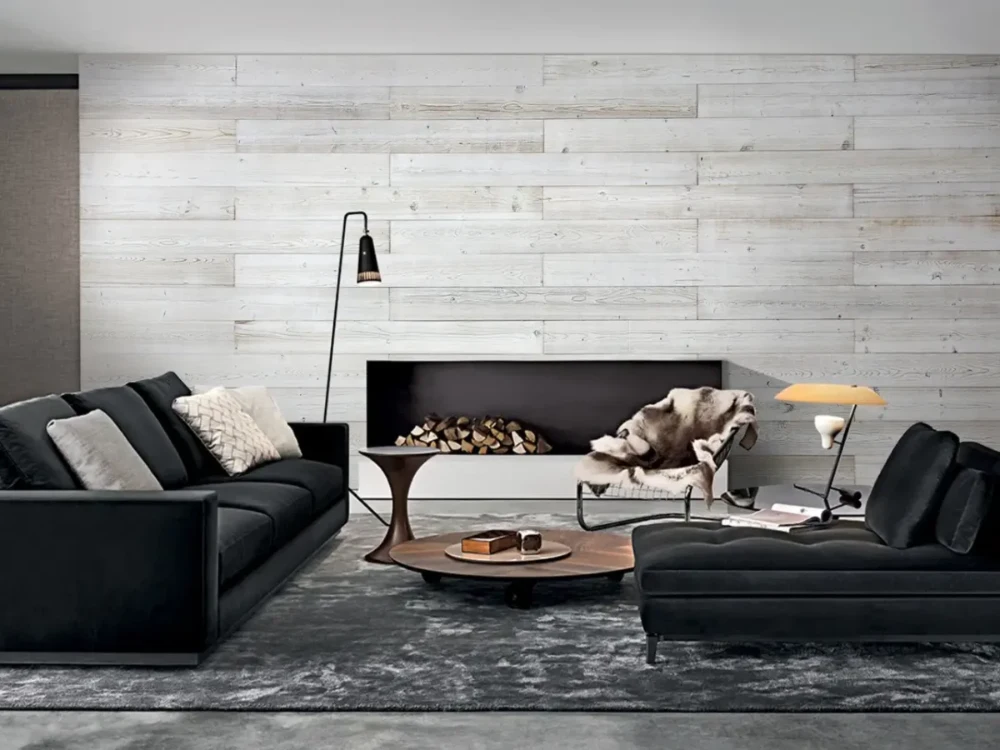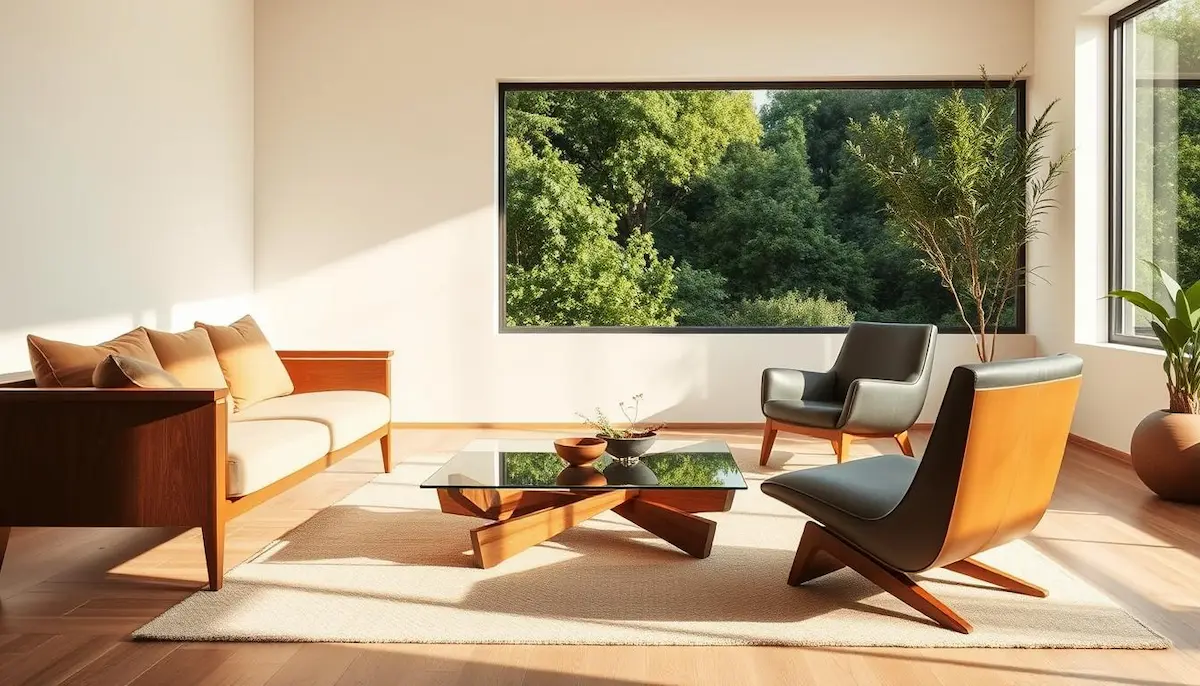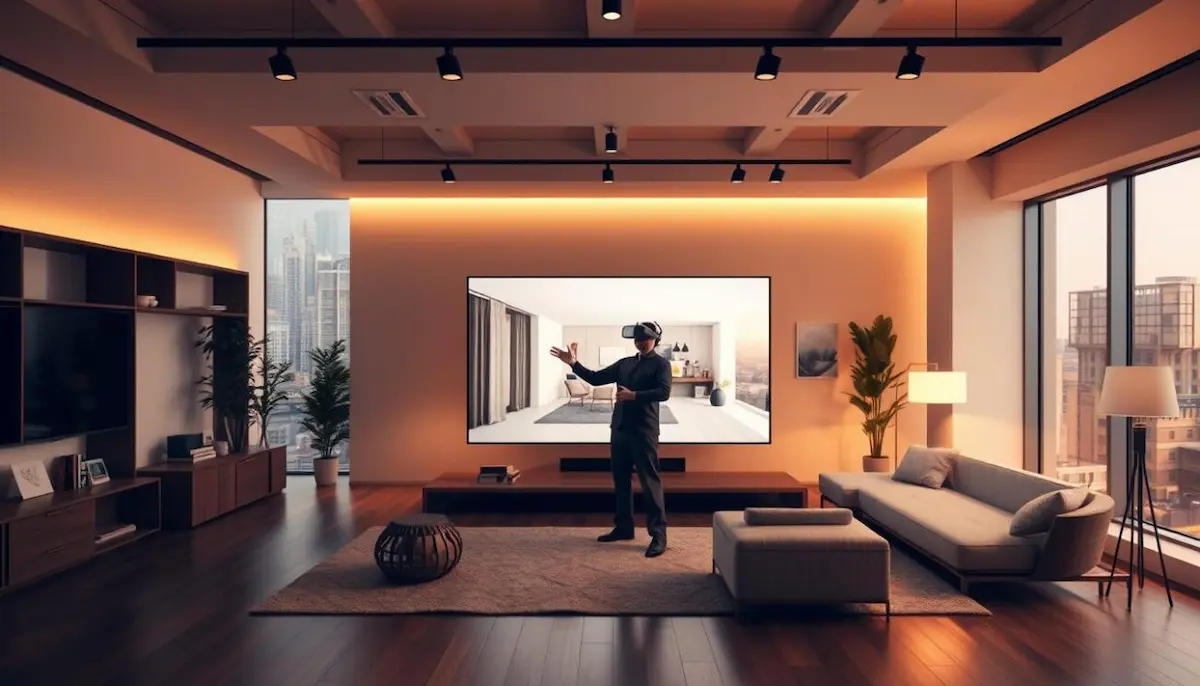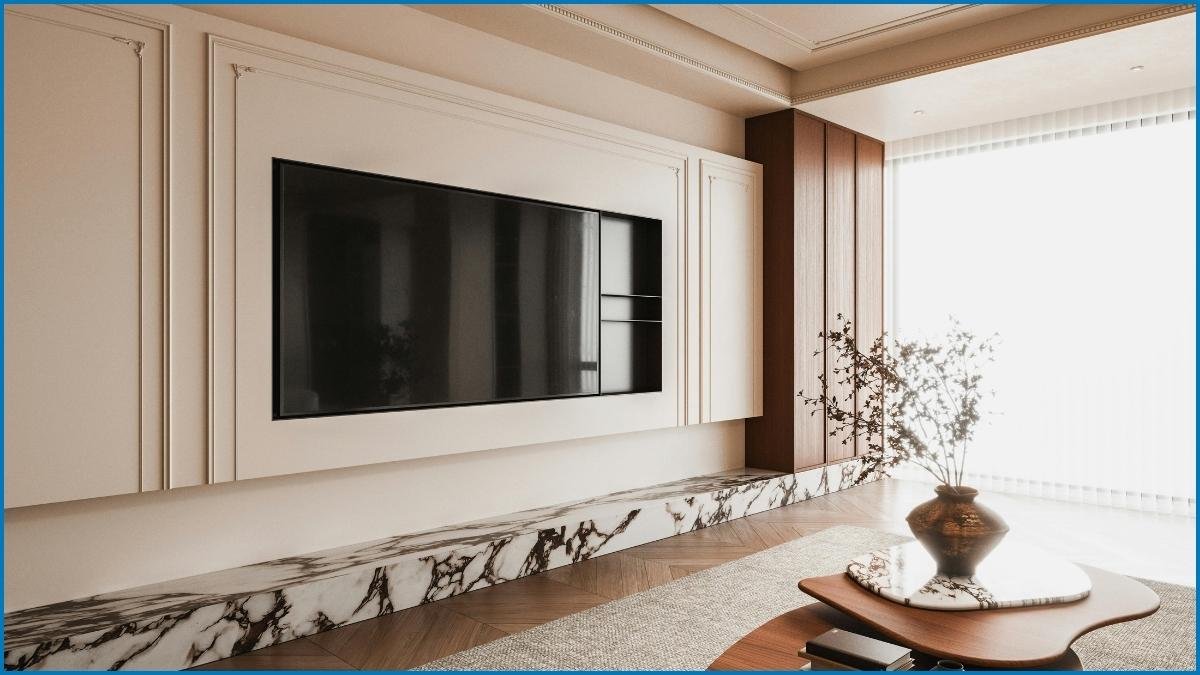10 interior design ideas for the study room for 2026

Are you tired of studying in a dull, uninspiring space? Can a well-designed study room really boost your productivity and academic performance?
Creating a productive and stylish study space is crucial for achieving academic success. In 2026, it’s all about incorporating innovative and functional study room decor inspiration that fosters a conducive learning environment.
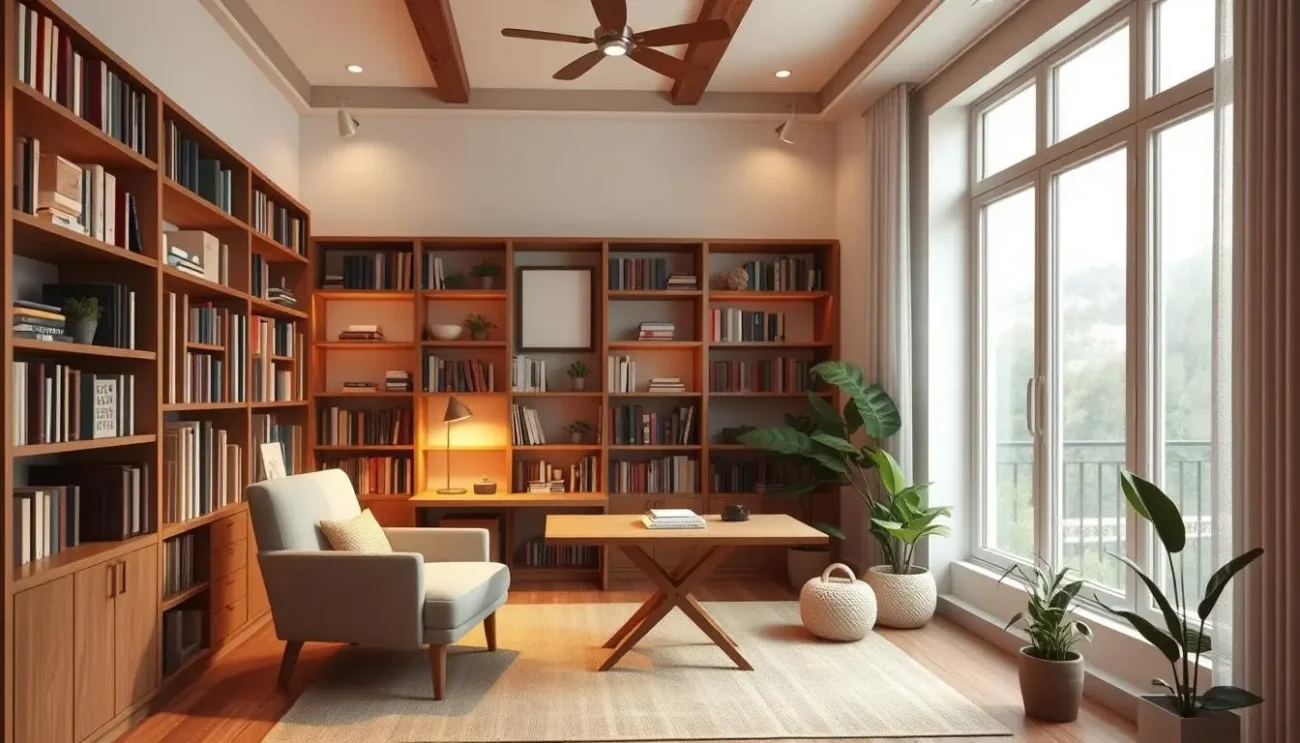
Discover 10 inspiring interior design ideas for the study room. Transform your study room into a haven of productivity and style. These expert-curated tips will help you create a space that is both functional and aesthetically pleasing.
Key Takeaways
- Boost productivity with a well-designed study room
- Incorporate innovative and functional decor
- Create a conducive learning environment
- Transform your study room into a haven of style
- Expert-curated tips for a functional and aesthetically pleasing space
The Evolution of Study Room Design in the Digital Age
Since 2020, study room design has undergone a significant transformation due to the rise of remote work and virtual learning. The work-from-home concept, boosted significantly post-pandemic, has not only changed how we work but also how we study, with terms like “college from home” and “school from home” becoming increasingly common.
How Work and Study Spaces Have Transformed Since 2020
The shift towards remote work and study has led to a reevaluation of home spaces. Home offices and study areas are being redesigned to accommodate the new demands of productivity and comfort.
Key Shifts in Home Office Requirements
With the increase in remote work, there’s been a notable shift towards creating spaces that are both functional and comfortable. This includes incorporating elements like ergonomic furniture and noise reduction strategies.
The Impact of Remote Work on Design Priorities
Remote work has prioritized the need for flexible and adaptable spaces that can accommodate different work styles and tasks. This has led to a rise in multifunctional furniture and innovative storage solutions.
Emerging Trends Shaping the Future of Home Study Spaces
As we look towards 2026, several design trends are emerging that will shape the future of home study spaces. These include a focus on sustainability and technology integration.
Forecasted Design Movements for 2026
Forecasts indicate that biophilic design, which incorporates natural elements into the workspace, will become increasingly popular. Additionally, smart home technology will play a significant role in enhancing productivity and comfort in home study spaces.
Smart Integration: Technology-Embedded Study Spaces
Smart integration is transforming study spaces into hubs of innovation and productivity. This integration involves various technologies that enhance the functionality and efficiency of study environments.
Wireless Charging Surfaces and Hidden Tech Solutions
The advent of wireless charging surfaces has eliminated the clutter of cables, creating a cleaner and more organized workspace. Hidden tech solutions, such as concealed outlets and retractable charging stations, further contribute to a minimalist aesthetic while maintaining functionality.
Comparing Integrated vs. External Charging Systems
Integrated charging systems offer a seamless and clutter-free experience, while external charging systems provide flexibility and ease of replacement. Here’s a comparison:
| Feature | Integrated | External |
|---|---|---|
| Clutter | Minimal | Moderate |
| Flexibility | Limited | High |
Voice-Activated Controls and Smart Lighting Systems
Voice-activated controls and smart lighting systems are revolutionizing the way we interact with our study environments. These technologies allow for effortless control over lighting, temperature, and entertainment systems, enhancing productivity and comfort.
Leading Smart Home Ecosystems for Study Environments
- Amazon Alexa
- Google Home
- Apple HomeKit
Digital Wall Displays and Interactive Surfaces
Digital wall displays and interactive surfaces are becoming increasingly popular in study spaces. They offer a dynamic way to present information, collaborate, and engage with content.
Touchscreen Desks vs. Projection Technologies
Touchscreen desks provide direct interaction with digital content, while projection technologies offer a larger, more flexible display area. Both have their advantages, depending on the specific needs of the user.
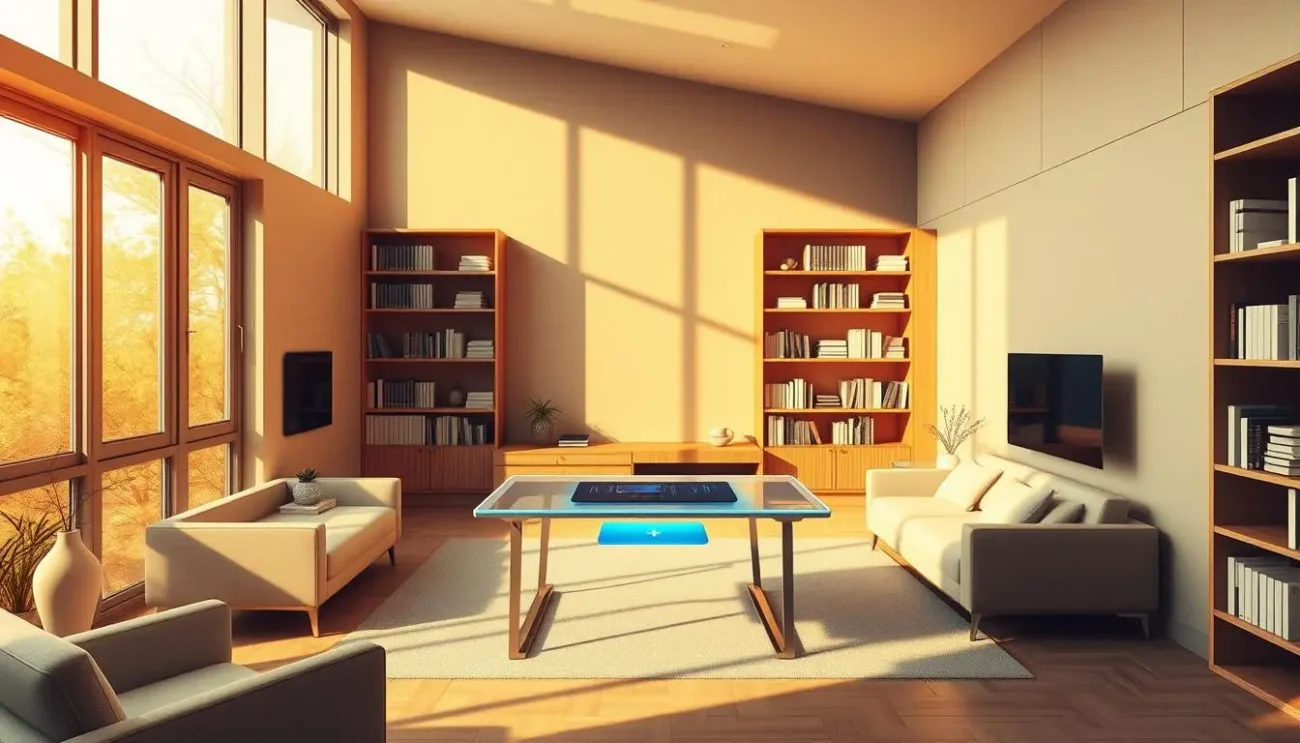
Biophilic Design: Bringing Nature Into Your Study
Biophilic design is revolutionizing the way we think about study spaces by bringing the outdoors in. This approach to interior design focuses on incorporating elements of nature to enhance wellbeing and productivity.
Living Walls and Sustainable Plant Arrangements
Living walls, also known as green walls, are a striking feature of biophilic design. They not only purify the air but also create a calming atmosphere. When it comes to sustainable plant arrangements, there are several options to consider.
Low-Maintenance vs. Statement Botanical Features
For those new to biophilic design, starting with low-maintenance plants like succulents or air plants can be a great introduction. For a bolder statement, consider incorporating more elaborate botanical features that can become a focal point in your study room.
Natural Materials and Textures for Focus and Wellbeing
The use of natural materials and textures is another key aspect of biophilic design. Materials such as wood, stone, and organic textiles can add warmth and depth to your study space.
Wood, Stone, and Organic Textiles: Comparing Options
- Wood: Adds warmth and can be used for furniture or accent walls.
- Stone: Provides a natural, earthy feel and can be used for decorative features or flooring.
- Organic Textiles: Such as wool or linen, can be used for upholstery or rugs, adding texture and comfort.
Water Features and Natural Sound Integration
The sound of water can be incredibly soothing, making it a popular choice for study rooms. Consider incorporating a small fountain or a water feature that also serves as a visual element.
Ambient Nature Soundscapes for Concentration
In addition to visual elements, ambient nature soundscapes can further enhance the biophilic experience. These soundscapes can help mask distracting noises and improve concentration.
By incorporating these biophilic design elements, you can create a study room that is not only aesthetically pleasing but also conducive to productivity and wellbeing. Whether you’re looking for study room makeover ideas or exploring the latest study room furniture trends, biophilic design offers a wealth of inspiration for creating a space that truly feels like your own.
Multifunctional Furniture for Adaptive Spaces
In today’s dynamic home environments, multifunctional furniture plays a crucial role in optimizing study spaces. As we continue to juggle various tasks and activities within these areas, the need for adaptable and efficient furniture solutions becomes increasingly important.
Transformable Desks and Storage Solutions
Transformable desks are revolutionizing the way we work and study from home. These innovative pieces can change shape or function to suit different tasks, from writing and reading to computer work and meetings.
Mechanical vs. Smart-Transforming Furniture: While mechanical transforming furniture relies on manual adjustments, smart-transforming furniture incorporates technology to automate changes, offering enhanced convenience and flexibility.
Modular Components for Changing Needs
Modular furniture components allow users to reconfigure their study spaces easily. This adaptability is particularly valuable in environments where needs and tasks frequently change.
Customizable Systems for Different Work Modes
Customizable modular systems enable users to tailor their study spaces to specific work modes, whether it’s focused individual work, collaborative projects, or relaxation.
Space-Saving Innovations for Compact Areas
In compact study areas, space-saving furniture is essential. Innovations such as wall-mounted desks and foldable storage solutions help maximize available space without compromising functionality.
Wall-Mounted vs. Foldable Design Solutions
Both wall-mounted and foldable designs offer effective ways to save space. Wall-mounted solutions keep floors clear, while foldable designs provide flexibility by allowing furniture to be easily stowed away when not in use.
To illustrate the benefits of multifunctional furniture, consider the following comparison of different desk solutions:
| Desk Type | Space Efficiency | Adaptability | Technology Integration |
|---|---|---|---|
| Traditional Desk | Low | Limited | Basic |
| Transformable Desk | High | High | Variable |
| Wall-Mounted Desk | Very High | Moderate | Basic |
When organizing your study space, incorporating multifunctional furniture can significantly enhance productivity and comfort. By choosing the right pieces, you can create a creative study room layout that meets your evolving needs.
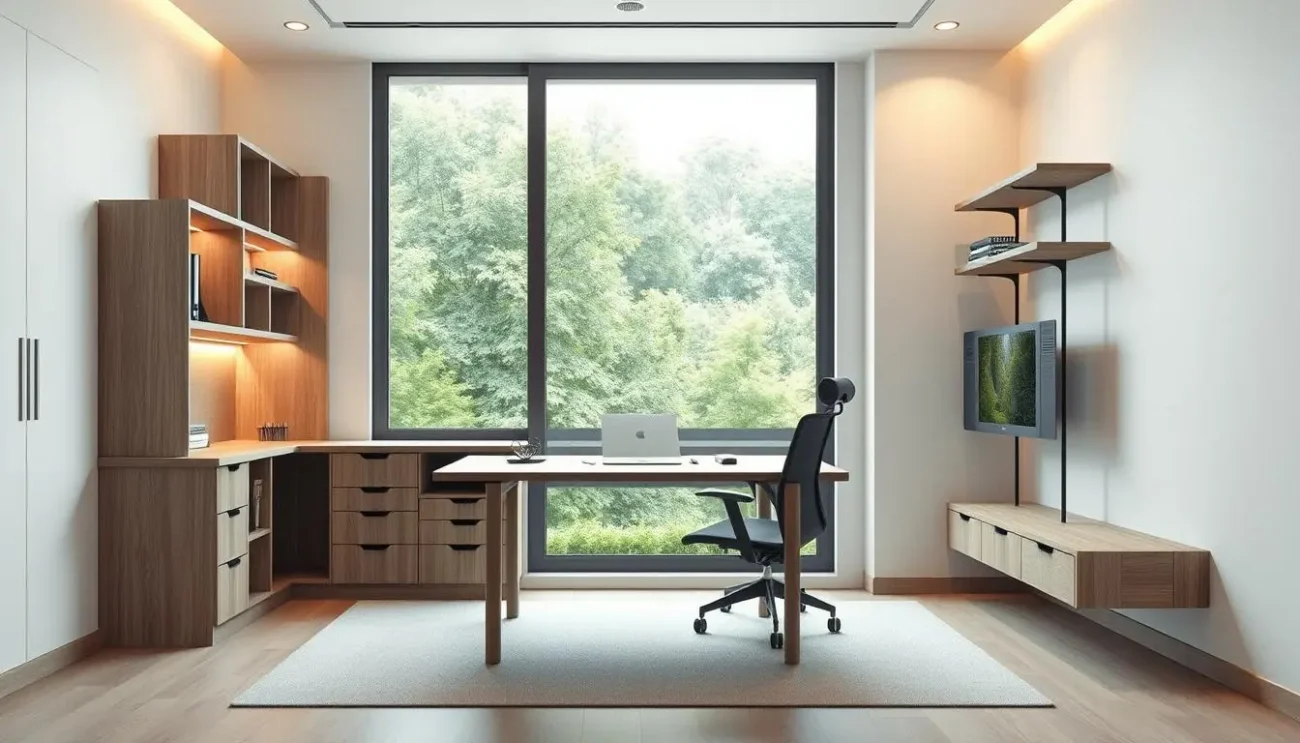
Acoustic Optimization: Creating the Perfect Sound Environment
The right acoustic setup can transform your study room into a haven of concentration. Acoustic optimization is crucial for creating a space that fosters productivity and minimizes distractions.
Sound-Absorbing Materials and Installations
Effective sound-absorbing materials are essential for reducing echo and ambient noise in your study room. Some popular options include:
- Acoustic panels
- Sound-absorbing curtains
- Specialized furniture designed to absorb sound
Comparing Acoustic Panels, Curtains, and Furniture
When choosing sound-absorbing solutions, it’s essential to consider their effectiveness, aesthetics, and cost. Here’s a comparison:
| Solution | Effectiveness | Aesthetic Appeal | Cost |
|---|---|---|---|
| Acoustic Panels | High | Variable | Moderate to High |
| Sound-Absorbing Curtains | Moderate | High | Moderate |
| Sound-Absorbing Furniture | Moderate | High | Moderate to High |
Zoning Techniques for Noise Management
Zoning your study room can help manage noise levels effectively. This involves creating separate areas for different activities.
Physical barriers, such as room dividers, and digital sound barriers, like noise-cancellation headphones, can be used to create these zones.
Physical vs. Digital Sound Barriers
Both physical and digital sound barriers have their advantages. Physical barriers can block sound and create visual separation, while digital barriers can enhance focus without altering the physical space.
Audio Enhancement for Productivity and Focus
Enhancing audio in your study room can significantly boost productivity. Consider incorporating ambient sound systems that play calming background noises or noise-cancellation technology to block distracting sounds.
By implementing these acoustic optimization strategies, you can create a study room environment that is conducive to productivity and focus, ultimately enhancing your study experience.
Innovative Interior Design Ideas for the Study Room for Maximum Productivity
Maximizing productivity in study rooms requires a thoughtful approach to interior design, incorporating elements that enhance focus and wellbeing. A well-designed study space can significantly impact an individual’s ability to concentrate and be productive.
Color Psychology in Work Environments
The choice of colors in a study room can greatly influence the ambiance and the occupant’s mood and focus. Different colors can stimulate different responses, making it crucial to select a palette that promotes productivity.
2026 Color Trends for Concentration and Creativity
The latest trends in color schemes for study rooms include a mix of calming and stimulating hues. Shades of blue and green are known for their calming effects, while accents of orange and yellow can boost creativity.
| Color | Effect on Productivity | Best Use |
|---|---|---|
| Blue | Calming, improves focus | Main walls |
| Green | Reduces eye fatigue | Accent walls or furniture |
| Orange/Yellow | Stimulates creativity | Decorative accents |
Lighting Strategies for Different Tasks and Times
Lighting is a critical element in study room design, affecting both the ambiance and the functionality of the space. Different tasks require different lighting strategies.
Circadian Lighting vs. Task-Specific Illumination
Circadian lighting adjusts to the natural daylight cycle, supporting the body’s natural rhythms. Task-specific illumination, on the other hand, is designed to meet the specific needs of the task at hand, such as reading or computer work.
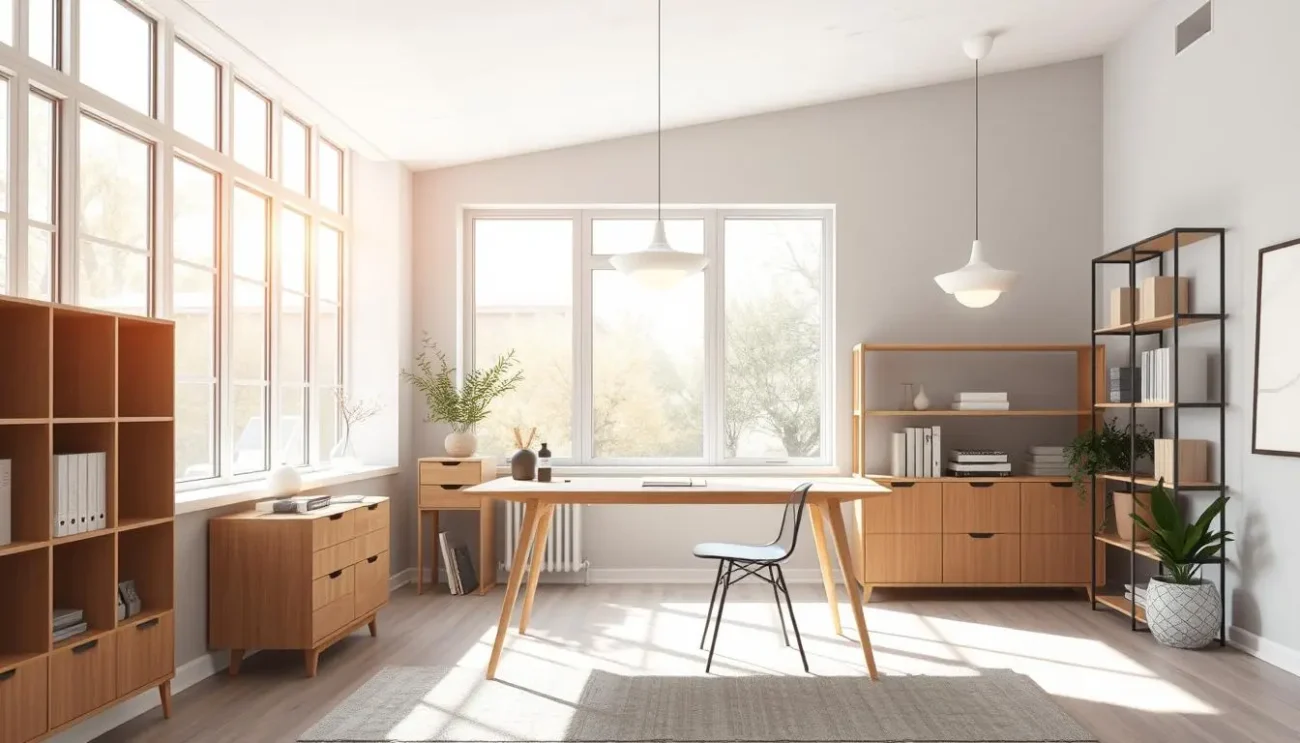
Ergonomic Arrangements for Physical Wellbeing
Ergonomic design is crucial for maintaining physical wellbeing during long study sessions. Comfortable seating and appropriately sized desks can prevent strain and discomfort.
Next-Generation Seating and Desk Configurations
The latest ergonomic seating and desk configurations prioritize comfort and flexibility. Adjustable desks and chairs with lumbar support are becoming increasingly popular.
By incorporating these innovative design ideas, study rooms can be transformed into highly productive spaces that support both mental and physical wellbeing.
Personalized Spaces: Customization and Adaptability
A well-designed study space that reflects individual needs can boost focus and efficiency. Personalization is crucial in creating an environment that fosters productivity and comfort.
Movable Partition Systems and Flexible Layouts
Movable partition systems offer a versatile solution for creating adaptable study spaces. These systems allow for easy reconfiguration to suit different study needs or group sizes.
Comparing Fixed vs. Dynamic Space Division
Fixed partitions can make a space feel rigid and unadaptable, while dynamic space division using movable partitions provides the flexibility to change the layout as needed. This adaptability is particularly beneficial in shared study spaces or homes with multiple users.
Benefits of Movable Partition Systems:
- Flexibility in layout design
- Easy adaptation for different group sizes
- Enhanced functionality for various activities
Personal Expression Through Decor and Accessories
Personal expression through decor and accessories can make a study space feel more inviting and conducive to concentration. Incorporating personal touches like motivational quotes, artwork, or plants can significantly enhance the ambiance.
Digital Personalization vs. Physical Artifacts
While digital personalization offers convenience and ease of change, physical artifacts provide a tangible and often more meaningful way to personalize a space. A balanced approach that combines both can create a rich and inspiring environment.
| Personalization Method | Benefits |
|---|---|
| Digital Personalization | Easy to update, customizable |
| Physical Artifacts | Tangible, meaningful, unique |
Adaptive Elements for Different Users and Activities
Adaptive elements are crucial for study spaces that cater to different users or activities. Adjustable furniture, modular components, and multi-functional areas can significantly enhance the usability of the space.
Multi-User Study Spaces: Shared vs. Individual Zones
Creating a balance between shared and individual zones is essential in multi-user study spaces. This can be achieved through the strategic use of movable partitions and flexible furniture arrangements.
Tips for Creating Adaptive Study Spaces:
- Assess the needs of all potential users
- Incorporate flexible and modular furniture
- Use movable partitions to create adaptable zones
Sustainable and Eco-Conscious Study Room Design
The shift towards sustainable living has led to a significant increase in eco-conscious study room designs that prioritize both productivity and the planet. As we continue to navigate the challenges of environmental sustainability, incorporating green design principles into our living and working spaces has become more crucial than ever.
Recycled and Upcycled Materials in Modern Design
One of the key strategies in creating an eco-friendly study room is the use of recycled and upcycled materials. This approach not only reduces waste but also adds a unique character to the space.
Comparing Traditional vs. Innovative Eco-Materials
| Material | Traditional Use | Innovative Eco-Use |
|---|---|---|
| Reclaimed Wood | Furniture making | Wall paneling, flooring |
| Recycled Glass | Countertops | Decorative accents, lighting fixtures |
| Bamboo | Flooring | Furniture, wall coverings |
Energy-Efficient Solutions for Responsible Spaces
Energy efficiency is a critical component of sustainable design. By incorporating smart energy management systems, homeowners can significantly reduce their energy consumption.
Smart Energy Management Systems for 2026
Smart energy management systems are becoming increasingly sophisticated, allowing for real-time monitoring and control of energy usage. This technology can be integrated into study room design to optimize lighting, heating, and cooling.
Circular Design Principles for Longevity
Circular design principles focus on creating spaces that are restorative and regenerative by design. This approach encourages the reuse and recycling of materials, reducing the overall environmental footprint.
Modular vs. Permanent Sustainable Installations
When it comes to sustainable installations, modular designs offer the advantage of flexibility and adaptability, allowing homeowners to easily modify or expand their study room as needed.
By embracing sustainable and eco-conscious design principles, individuals can create study rooms that are not only productive and comfortable but also environmentally responsible. This holistic approach to design supports both personal wellbeing and the health of the planet.
Virtual Reality and Augmented Spaces
Modern study room design is embracing virtual and augmented realities to create more interactive and engaging environments. This shift is transforming the way we study and work, offering new possibilities for productivity and creativity.
VR Integration for Expanded Virtual Workspaces
The integration of VR technology allows for the creation of immersive virtual workspaces that can enhance focus and productivity. For instance, VR can be used to create virtual whiteboards or collaborative environments.
- Enhanced collaboration through virtual environments
- Improved focus through immersive experiences
Comparing Immersive Work Environments
Immersive work environments can be tailored to individual needs, offering a range of benefits. A comparison of different VR setups reveals varying levels of immersion and interaction.
Projection Mapping and Immersive Environments
Projection mapping technology can transform any surface into a dynamic display, creating immersive environments that stimulate creativity.
Key benefits include:
- Dynamic visual transformations
- Enhanced engagement through interactive displays
Static vs. Dynamic Visual Transformations
The choice between static and dynamic visual transformations depends on the specific needs of the user. Dynamic transformations can offer more engaging experiences.
Digital-Physical Hybrid Solutions
Digital-physical hybrid solutions combine the benefits of both worlds, offering flexible and adaptable study environments.
Mixed Reality Tools for Enhanced Productivity
Mixed reality tools can enhance productivity by providing interactive and immersive experiences that blend digital and physical elements.
Conclusion: Creating Your Future-Ready Study Space
As we’ve explored throughout this article, designing a study room that is both functional and inspiring requires careful consideration of various elements, from smart integration and biophilic design to multifunctional furniture and acoustic optimization. By incorporating these interior design ideas of the study room, you can create a space that fosters productivity, creativity, and well-being.
To bring these concepts to life, it’s essential to stay abreast of the latest study room furniture trends. Whether you’re a remote worker or a student, a well-designed study space can significantly impact your performance and overall quality of life. If you’re looking to design your workspace like a pro, consider consulting with professional interior designers who can help you craft a study room that meets your unique needs.
For expert guidance, contact Purn Interiors, and let their team of professionals work with you to create the study room of your dreams. With the right design and layout, you can unlock your full potential and achieve your goals in a space that is both beautiful and functional.
FAQ
What are the key elements of a productive study room design?
A productive study room design incorporates elements such as good lighting, comfortable seating, and minimal distractions, along with the integration of technology like wireless charging surfaces and voice-activated controls to enhance functionality.
How can I incorporate biophilic design into my study room?
Biophilic design can be incorporated into your study room by adding natural elements such as living walls, natural materials, and water features, which can enhance focus and wellbeing.
What are some multifunctional furniture ideas for a study room?
Multifunctional furniture ideas include transformable desks, modular components, and space-saving innovations that can adapt to different work modes and needs, creating a more efficient study space.
How can I optimize the acoustics in my study room?
Acoustic optimization can be achieved by using sound-absorbing materials, implementing zoning techniques for noise management, and incorporating audio enhancement strategies to create a conducive work environment.
What role does color psychology play in study room design?
Color psychology plays a significant role in study room design as different colors can influence mood, focus, and productivity, making it essential to choose a color scheme that promotes a conducive work environment.
How can I create a personalized study space?
Creating a personalized study space involves incorporating elements that reflect your personality, such as decor and accessories, and using movable partition systems and flexible layouts to adapt to different needs and activities.
What are some sustainable design principles for a study room?
Sustainable design principles include using recycled and upcycled materials, incorporating energy-efficient solutions, and applying circular design principles to create a responsible and eco-conscious study space.
How can virtual reality and augmented reality be integrated into a study space?
Virtual reality and augmented reality can be integrated into a study space through VR integration, projection mapping, and digital-physical hybrid solutions, creating immersive and interactive environments that enhance productivity.
What are the benefits of using smart technology in a study room?
The benefits of using smart technology in a study room include enhanced functionality, improved productivity, and increased efficiency, thanks to features like voice-activated controls, smart lighting systems, and digital wall displays.
How can I maximize the functionality of my study room?
Maximizing the functionality of your study room involves incorporating multifunctional furniture, optimizing acoustics, and using smart technology to create a space that is both productive and comfortable.





